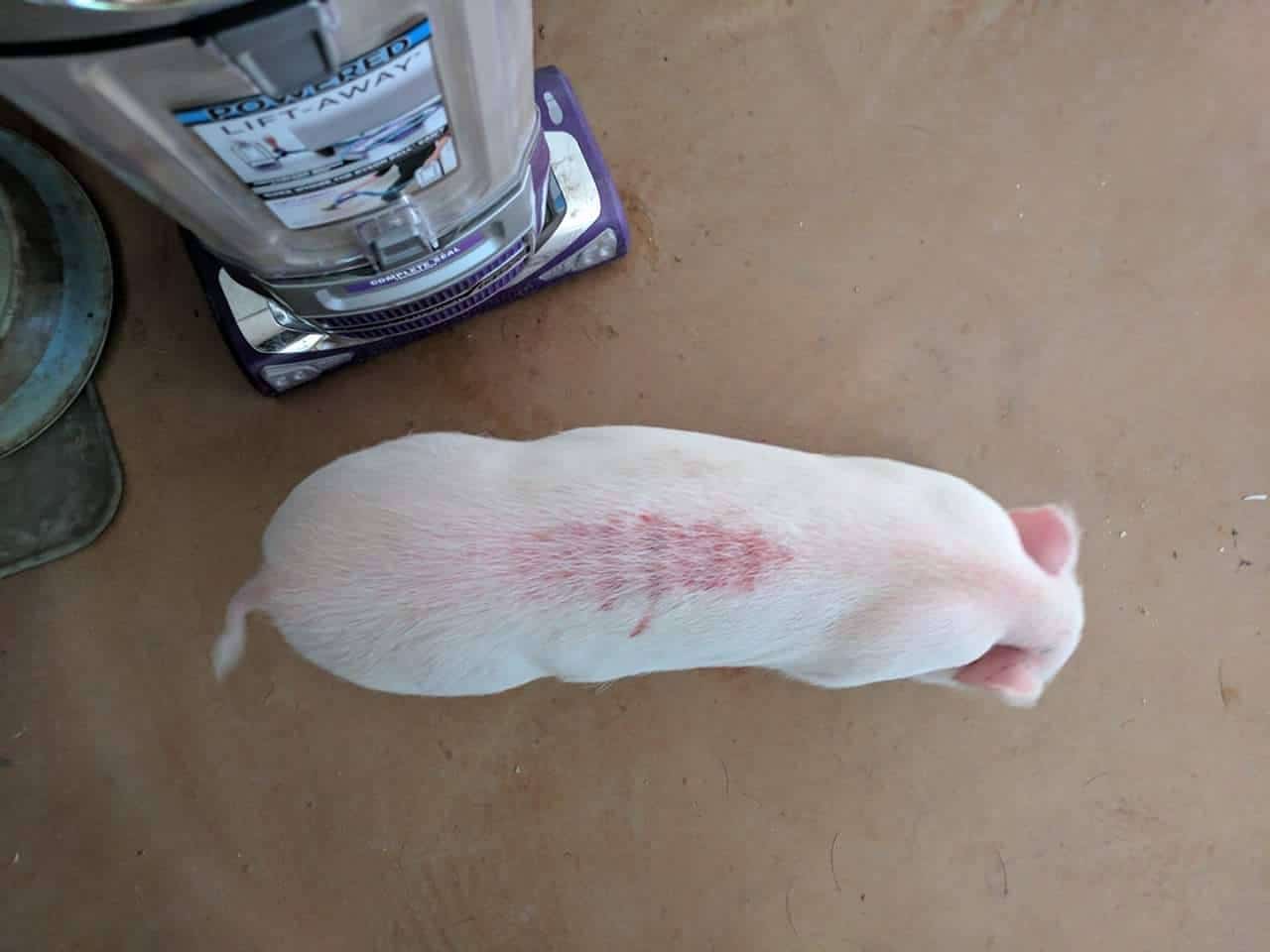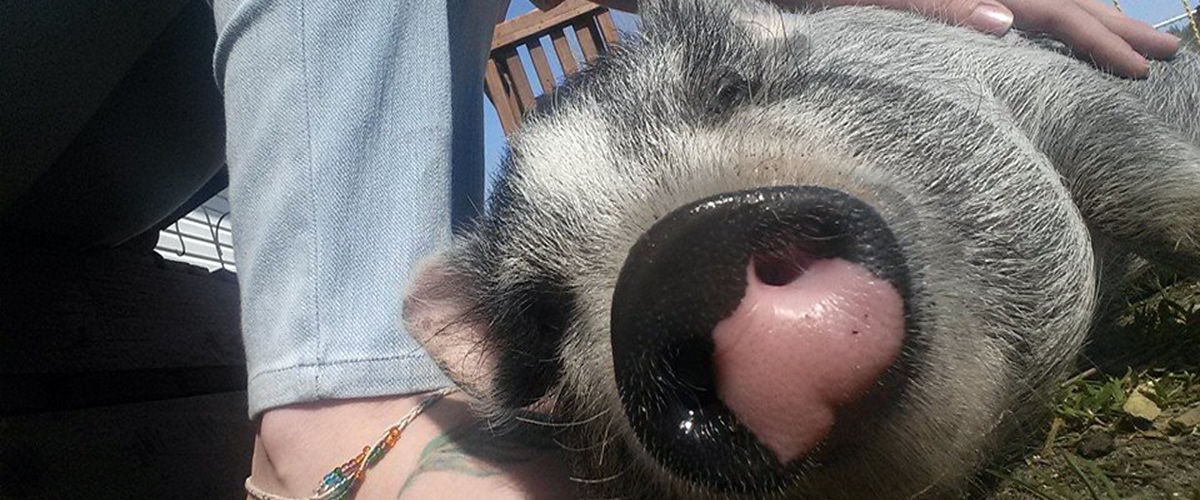Dippity Pig Syndrome by Cathy Zolicani (Cathy Corrigan, DVM) (03/01/15)
Also called Bleeding Back Syndrome and Erythema Multiforme
Dippity Pig Syndrome is an acute, painful skin condition that occurs along the back in healthy young pigs.
Symptoms:
- Occurs in young pigs – between 4 months and 4 years
- Sudden, rapid onset
- Screaming/squealing in pain
- Dipping or temporary loss of use of hind legs – it usually does not affect front legs
- Red, oozing sores on back – there are usually more than one, and they make stripes across the back rather than following the length of the back bone
- Pigs will try to run or move away from the pain
- Pigs will usually eat and drink
- Pigs will usually have normal stool and urine
- Pigs will usually have a normal body temperature
- Usually lasts 2-4 days
- Can reoccur in some pigs
- Happens most often in small pet pigs, occasionally in show pigs, and has been reported a few times in farm pigs
- Seems to be associated with a stressful situation
For photo examples of Dippity pig visit our Pinterest board by clicking here.
Cause:
The cause of Dippity Pig Syndrome is not known. There is some evidence, based on biopsy results, that it may involve a herpes virus (like shingles in the human being). There is evidence that it occurs in some family lines.
Treatment:
- This condition will resolve after 2-4 days with no medical intervention
- Reduce stress in the environment – keep the pig in a quite familiar environment with soft bedding, dim light, soft music and reduced noise.
- Isolate the pig from people – these pigs are very painful. In some cases, even blowing on their backs will cause a collapse. They need to be left alone to rest.
- Some veterinarians will use anti-inflammatory steroids to treat Dippity. NSAIDs have also been used. Since there is some evidence that a herpes virus may be involved, this treatment is somewhat controversial.
For pain:
- Buffered aspirin, 5 mg per pound every 12 hours, with a meal. For no more than 3 days
OR
- Tylenol, 5 mg per pound every 8 hours. (If you use infant’s Tylenol, 1 cc per 6 pounds). Always with food. For no more than 3 days
- Tramadol or buprenex can be prescribed by your veterinarian for pain control.
To help the pig rest:
- Benadryl (aka diphenhydramine) up to 1 mg per pound every 8 hours.
REASONS TO HAVE YOUR PIG SEEN BY A VETERINARIAN:
- If you are worried about him/her
- If the pig is not responding to treatment
- If the condition continues for longer than 4 days
- If both the back AND front legs are involved (probably not Dippity)
- If your pig will not eat nor drink
- If your pig continues to be very painful
- If your pig runs a fever (temperature greater than 103)
- If your pig seems unresponsive


Video of symptoms:
